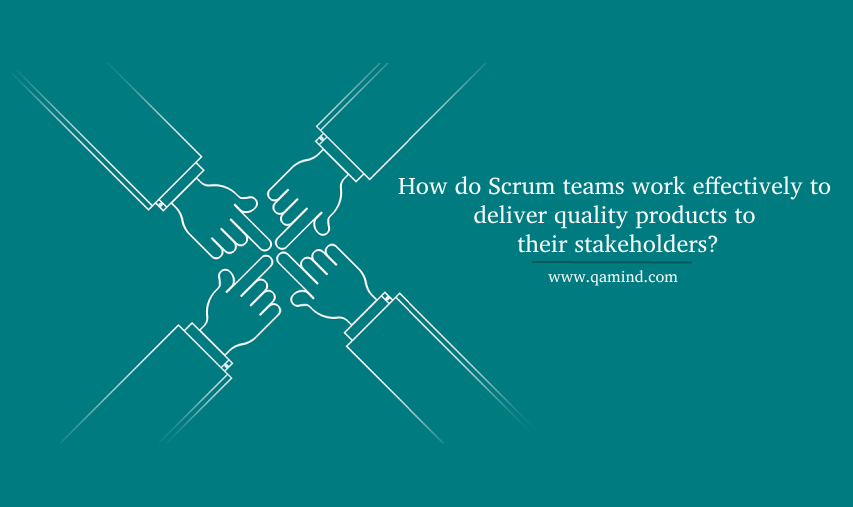
A little bit about Scrum
Created by Ken Schwaber & Jeff Sutherland, Scrum is a framework for helping teams and organizations achieve their goals and generate value for their customers. It’s not a strict approach but intentionally incomplete because the idea is to direct the Scrum Teams rather than instruct them. The great thing about this framework is that various different methods and approaches can be incorporated, making learning and adjusting to the process easier and more transparent.
Empiricism and lean thinking are the cornerstones of how Scrum is built since they say that knowledge is based on experiences and what has been done in the past can serve us to make better decisions in the future. For one Scrum team to be fully effective they need to incorporate the three Scrum Pillars: Transparency, Inspection, and Adapdation. They do this by following the 4 main events in Scrum contained in one iterative increment event called Sprint where delivering fast and getting rapid feedback is the main goal.
What is a Scrum team?
A cross-functional and self-organizing team, small enough to complete the committed work in one Sprint and put a focus on quality. By cross-functional I mean, a team that has the necessary skills from different domains that can do the job but help each other when needed. A self-organizing team means that the team has the autonomy to assign the tasks themselves and organize how the work will be performed. It basically answers the how should work on what and how. One scrum team consists of:
- Product Owner
- One person, not a team where the making goal is maximizing the value of the product as a result of the Sprint work
- Responsible for defining the Product Goal and sprint Goal, creating the Product Backlog, and ordering the items in the backlog
- Scrum Master
- One person, not a team, is responsible for establishing the Scrum practices and approaches within a team or organizations
- Helps the Scrum team, Product Owner, and the organizations in various ways from, creating the Scrum events, facilitating communication and understanding, removing impediments, providing techniques for effective Product Backlog planning, etc.
- Developers
- The ones who are building and testing the product, specifically the increment in the Sprint. They can be programmers, testers, IT admins, etc. All fall under this category
- Responsible for defining and managing the progress toward the Spring Goal
- Creating the Sprint Backlog and adapting as more is learned throughout the Sprint
What is the goal of the Scrum team?
Every Scrum team must set some kind of goal to work towards it. In the case of one Sprint, the team has a Sprint Goal which is defined at the Sprint Planning meeting and it is not changed during the sprint. The developers can change/add the items they pull in the Sprint but they should affect the Sprint goal at the end. The Sprint goal is discussed through the Daily Scrum as well as at the end of the Sprint.
In the case of a product direction, there is a goal that is set at the beginning of the work called a Product Goal. It explains the long-term objective of the team or the expected future state of the product. There can be many product goals but one team must complete or abandon one to go to the next goal.
All members of the scrum team are responsible for the generated value at the end of the Sprint. They need to include their stakeholders at the Sprint Review meeting to discuss the increment and the progress toward the Product Goal as well as demo what has been achieved in the past sprint.
How Scrum team work?

In order to work effectively and be more organized the Scrum Team needs to decide how long one Sprint should last. It shouldn’t be more than 1 month as the value of getting rapid feedback will be diminished. Usually, a two-week sprint works best for most teams. Every role in Scrum has a responsibility but they need to collaborate with each other on a daily basis to achieve their goals. For example in Sprint Planning, the developers need to discuss the already prioritized items by the Product Owner from the Product Backlog that represent a customer’s requirements, refine them by adding description and definition of done, estimate them, and pull them into the Sprint.
The Scrum Master can foster an empirical way of thinking in the team of thinking before pulling the items. During the Sprint the quality should not be reduced. They should agree on quality gates and stick to them throughout the iteration. They need to adapt the Sprint Backlog in daily meetings as more is learned because requirements can change, items already worked on can also change and since the team works in Agile, they need to adapt rather than following a strict plan.
At the end of the Sprint, specifically in the Sprint Retrospective & Review meetings, the team discusses how the Sprint went, what value they created and what improvements should they take to strengthen the practices, communication, and behavior. The value delivered at the end may as well be released to production but not necessarily. As long as the stakeholders are happy with the increment provided the sprint goal is achieved and further actionable plans are defined and created.
Final words
The Scrum team is much more than just a regular development team. There are no sub-hierarchies, no other roles that aren’t aligned with the Scrum framework, and no micromanagement from stakeholders or upper management. The team should be fully flexible and have a high level of autonomy. Unlike many teams outside Scrum, the Scrum team members collaborate with each other regularly in order to satisfy the customer requirements and to generate a potentially shippable increment.












One reply on “How do Scrum teams work effectively to deliver quality products to their stakeholders?”
[…] To successfully deliver high-quality products in an incremental and iterative manner, a team must adopt an agile mindset focused on achieving goals. The Scrum framework is one such agile approach where software product components are delivered in short, frequent cycles, with quick feedback loops. Central to the Scrum framework are elements of importance known as artifacts. In this article, we’ll delve into the concept of Scrum artifacts, exploring their creation, maintenance, and the connections between Scrum Teams and each of these significant components. […]
Comments are closed.